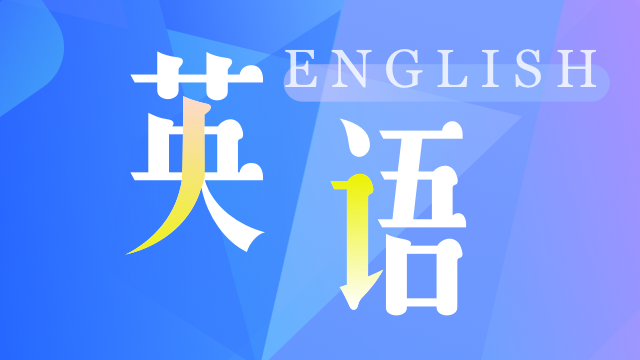清明节 用英语怎么说
清明节 用英语怎么说?临近清明节咯,我们学习英语的小伙伴,你知道“清明节”用英语怎么说吗?下面小编带大家来认识一下英语的清“明节”
清明节
“清明节”又称踏青节、寒食节、祭祖节,清明节是传统的重大春祭节日,清明节与春节、端午节、中秋节并称为中国四大传统节日。清明节期间,扫墓祭祖与踏青郊游是清明节的两大礼俗主题,这两大传统礼俗主题在中国自古传承,至今不辍。
除了中国,世界上还有一些国家和地区也过清明节,比如越南、韩国、柬埔寨、马来西亚、新加坡等。2006年5月20日,中华人民共和国文化部申报的清明节经国务院批准列入第一批国家级非物质文化遗产名录。
ORIGIN 起源
Qing Ming is popularly associated with Jie Zitui, who lived in Shanxi province in 600 B.C. Legend has it that Jie saved his starving lord's life by serving a piece of his own leg. When the lord succeeded in becoming the ruler of a small principality, he invited his faithful follower to join him. However, Jie declined his invitation, preferring to lead a hermit's life with his mother in the mountains.
谈到清明节,有点历史知识的人,都会联想到历史人物介子推。据历史记载,在两千多年以前的春秋时代,晋国公子重耳逃亡在外,生活艰苦,跟随他的介子推不惜从自己的腿上割下一块肉让他充饥。后来,重耳回到晋国,作了国君(即晋文公,春秋五霸之一),大肆封赏所有跟随他流亡在外的随从,惟独介子推拒绝接受封赏,他带了母亲隐居绵山。
Believing that he could force Jie out by burning the mountain, the lord ordered his men to set the forest on fire. To his consternation, Jie chose to remain where he was and was burnt to death. To commemorate Jie, the lord ordered all fires in every home to be put out on the anniversary of Jie's death. Thus began the "cold food feast", a day when no food could be cooked since no fire could be lit.
晋文公无计可施,只好放火烧山,他想,介子推孝顺母亲,一定会带着老母出来。谁知这场大火却把介子推母子烧死了。为了纪念介子推,晋文公下令每年的这一天,禁止生火,家家户户只能吃生冷的食物,这就是寒食节的来源。
The "cold food" festival occurs on the eve of Qing Ming and is often considered as part of the Qing Ming festival. As time passes, the Qing Ming festival replaced the "cold food" festival. Whatever practice is observed,the basic observation of Qing Ming is to remember one's elders by making a special effort to visit their graves, ashes or ancestral tablets. To make the visit even more meaningful, some time should be spent to remind the younger members of the family of the lives and contributions of their ancestors, and the story of Jie Zitui who chose death over capitulation.
寒食节是在清明节的前一天,古人常把寒食节的活动延续到清明,久而久之,清明取代了寒食节。拜介子推的习俗也变成了清明扫墓的习俗了。无论以何种形式纪念,为了使纪念祖先的仪式更有意义,我们应该让年轻一代的家庭成员了解先人过去的奋斗历史,当然,还要学习介子推宁死不屈的气节。
“清明节”怎么翻译,更准确?
想知道“清明节”怎么翻译,就需要知道“清明”的具体含义是指什么哦~我们一起来看看吧!
1.侧重天气“清明”
Clear and Bright
The Pure Brightness Day
其实,清明节的“清”和“明”是用来描述天气的,意思是“清洁”和“明亮”。
所以,从节气的角度,清明节可以翻译为:Clear and Bright,还可以把清明节翻译为:The Pure Brightness Day,也是取其“清净、明亮”之意。
作为二十四节气(the 24 traditional Chinese solar terms)中的一个,“清明”的特别就表现在,它是唯一一个和传统节日“清明节”并存的节气。
Of all the 24 solar terms, Clear and Bright is the only one whose first day is also a traditional Chinese festival, Qingming Day.
(“清明”既是节气,又是节日)
清明节的日期是这么算的:春分后的第15天,也就是4月4日或5日。这段时间,温度会上升,雨水会增多,适合耕作播种。
It is the 15th day after the Spring Equinox, either 4 or 5 April in a given year.
2.侧重“扫墓祭祖”
Tomb Sweeping Day
All Souls' Day
早在唐朝,我们就有祭祖(worshiping ancestors)传统。祭祖时,我们会扫墓、上供品、纸钱等,以示敬意。
所以,清明节又被翻译为“扫墓日”
——Tomb Sweeping Day
这个说法也是目前最常见的一种
外国人一听大概也能明白这个节日的含义。
Tomb-sweeping Day
清明节
如果您喜欢英语学习,想要深入学习,https://www.hujiang.com/ 这是我们的网校 大家如果不了解我们的课程 可以了解沪江网校精品课程,量身定制高效实用的个性化学习方案,专属督导全程伴学,扫一扫下方还能领200畅学卡。
以上就是本文的去全部内容啦!你掌握了吗?相信我们小伙伴已经掌握了。











